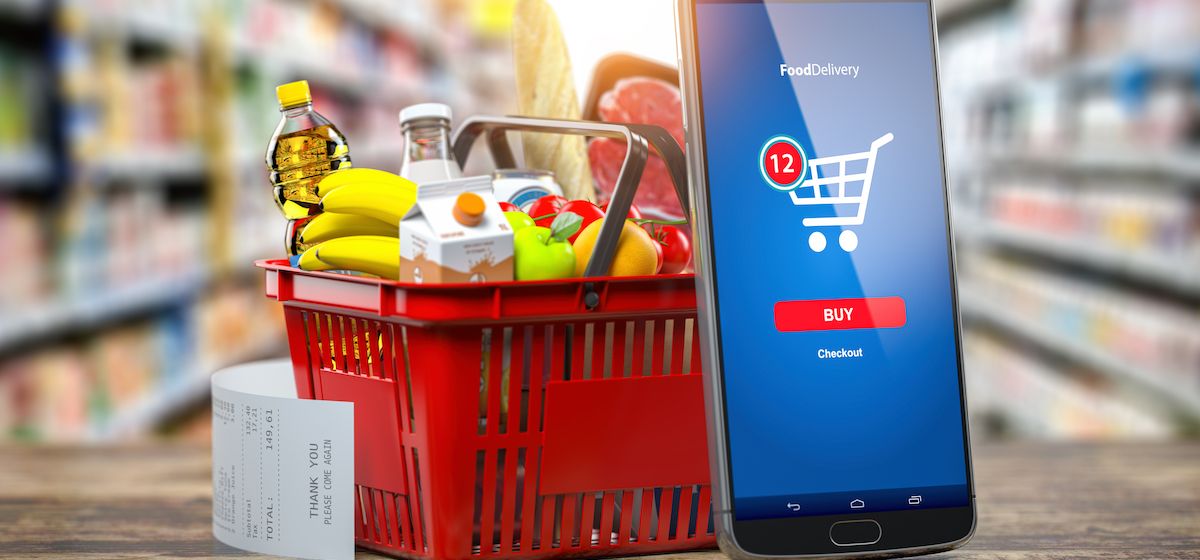The future of food shopping
Digital transformation is happening in all areas of life, and grocery stores are no exception. A customer-centric approach requires a new approach to retailing, and only those stores that can engage with digital consumers will survive. The focus is on the customer and the key is to deliver a personalised experience through a data-driven strategy. In this blog post, we look at the future of grocery shopping and how retail media will play a role!
The food market is forecast to grow by a further $1.9 billion in 2023, representing a 28% increase between 2018 and 2023. This volume is spread across many players, so competition is fierce at global and local level. E-commerce is also a key driver for grocery shopping.
The COVID-19 pandemic gave a huge boost to online grocery sales a few years ago, and this trend has continued after the pandemic. In a survey conducted by Strategy&, food industry experts were asked what they expect to see in the grocery market, and predicted a 35-50% increase in online grocery sales in countries such as Germany, France, the UK and Turkey.
What future for grocery stores? What trends are expected and what role will retail media play in the transformation of grocery stores? Let's look at the answers!
What can be expected in the food trade?
Shopping will be an experience
User experience has long been a guiding principle in the design of apps and interfaces, but it is also becoming increasingly important in the grocery shopping sector. The e-commerce experience is complete when the user can personalise, choose and have access to a wide range of discounts, promotions and special offers.
A data access strategy is needed
Today, it's all about data, and so it is for grocery stores. Those who want to be present and sell in the online space need to harness the power of data. They need to track the customer journey, their preferences, and use this to refine product offerings, delivery, pick-up options, etc. Data can help stores create services that maximise customer satisfaction.
Multi-channel models are needed
The secret to the success of modern grocery stores is to integrate both online and offline channels into a multi-channel business model that puts the needs of the customer at the centre.
Increase mobile presence
eGroceries cannot afford to ignore mobile shoppers. So a mobile app or a PWA is definitely a good choice.
Delivery must be taken care of
The cost and organisation of delivery for online grocery stores cannot be avoided. It is an additional cost that online stores can recoup by making their processes more efficient and cutting costs, or by increasing sales and finding new advertising opportunities.
Commitment is key
One of the ways to increase engagement is to improve the customer experience. The line between online and offline is becoming increasingly blurred, for example with the use of parcel machines that allow you to pick up products ordered online in person.
Shops must always be accessible
There are no closing hours for eGrocery, it must be available at all times of the day. This is something that retailers need to address if they want to remain competitive.
Marketing needs to evolve
Food retailers need to further develop their digital strategy. The focus should shift from leaflets and posters to online advertising. This includes targeted and personalised advertising.
Retail media can be a modern, 21st century solution for grocery stores. Here's what makes retail media a good choice to integrate into your strategy.
The role of retail media in the future of grocery stores
Retail media is a preferred choice for retailers, brands and consumers. By integrating the right platforms, grocery stores can build a system where the brands they sell can buy advertising space. This will allow them to generate additional revenue.
Brands that advertise in grocery stores will have access to a new form of online advertising. They can reach consumers in the middle of the shopping process, at a stage when they are ready to spend money and buy.
For retail media, data plays a very important role. The data and information collected by retailers is valuable to brands, who can use it to refine and improve their messages and advertising, thereby increasing the likelihood of purchase.
The future of e-commerce is the experience, that's what will be most important in the buying decisions. Retail media can help to enhance the experience by enabling personalisation and serving the needs of shoppers.
Retail media also offer an opportunity to give visibility not only to the big players, but also to the smaller ones. This is due to the fact that any brand can advertise on the retailer's site.
Retail media is a growing and expanding field, which makes it a particularly good choice for online grocery stores. Inhabitad's system is completely free to integrate, with only a share of the advertising revenue going to the operator. Thanks to the IT solution, anyone can benefit from the advantages of retail media. The retailer's aim is for brands to find their target audience on the website and of course brands want the same. Retail media can benefit retailers and brands, not least the customers who can enjoy a better user experience.
Get to know Inhabitad!


